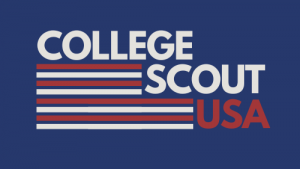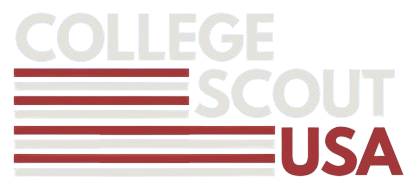American Soccer Scholarships for UK Students: 6 Common Myths Debunked
Many UK players misunderstand the process of American soccer scholarships. This guide debunks the most common myths and explains what opportunities really exist.

Introduction
For many young footballers in the UK, the idea of moving to the United States to study and play soccer is both exciting and intimidating. Unfortunately, there are a lot of misconceptions about how American soccer scholarships work, what’s required to earn one, and what kind of experience students can expect. These myths often discourage players from exploring what could be a life-changing opportunity.
In this article, we’ll debunk some of the most common myths surrounding American soccer scholarships for UK students and give you a clearer picture of the process.
Myth 1: Only Elite Academy Players Get Scholarships
One of the biggest misconceptions is that only players from professional academies or those with elite-level experience stand a chance. While it’s true that NCAA Division 1 programs tend to recruit higher-level players, there are hundreds of other opportunities in NCAA Division 2, Division 3, NAIA, and NJCAA.
Many UK players from semi-pro, non-league, or even strong grassroots backgrounds have gone on to earn scholarships. Coaches are often looking for athleticism, technical ability, and character rather than just a specific badge on your CV.
Reality: Players from a wide range of backgrounds can earn scholarships if they’re committed, proactive, and willing to showcase their ability in the right way.
Myth 2: Scholarships Always Cover 100% of Costs
Another common myth is that american soccer scholarships are always a “full ride” that pay for everything. In reality, most scholarships are partial. A coach might cover tuition but not accommodation, or provide a percentage reduction in overall costs.
For example, an NCAA Division 1 men’s soccer program is allowed to award 9.9 scholarships per team, but those awards are usually divided between 25–30 players. This means most players receive a partial award rather than a full one.
In the NAIA, men’s soccer programs are allowed up to 12 scholarships per team, which are also commonly split among the squad. The slightly higher number gives coaches more flexibility, but full rides are still rare.
In the NJCAA (Junior College) system, men’s soccer teams can award up to 18 scholarships per team, and because rosters are often smaller than in NCAA or NAIA, some players may receive larger awards — sometimes close to full coverage. However, the level of competition and exposure may differ compared to four-year colleges.
Reality: Scholarships often reduce costs significantly, but families should plan for some expenses. That said, the cost is still far lower than paying full international tuition fees.
Myth 3: Only Division 1 Is Worth Playing In
Many UK players think that if they’re not recruited by a Division 1 school, then the opportunity isn’t worth pursuing. This couldn’t be further from the truth.
Division 2, NAIA and NJCAA programs often have excellent facilities, competitive leagues, and coaches who genuinely develop players. For example, Nathan Opoku played at NAIA side Lindsey Wilson College before transferring to Syracuse University, where he won the NCAA National Championship and was named College Cup Offensive MVP. He has since signed professionally with Leicester City and gone on loan to OH Leuven in Belgium.
Bethany Balcer also came through the NAIA system at Spring Arbor University, winning national titles and later becoming NWSL Rookie of the Year and a full US international.
At the University of Maine at Fort Kent (UMFK), Jennifer Cudjoe and Sherifatu Sumaila both showcased their talent before moving into professional football and representing Ghana at international level.
Similarly, Dom Dwyer began his US journey at Tyler Junior College (NJCAA), winning back-to-back national championships before transferring to NCAA Division 1 and later scoring over 100 goals in Major League Soccer.
These cases show that many professional players, both in the US and abroad, ahd successful american soccer scholarships in NAIA or NJCAA programs before transferring or moving on to pro clubs.
Reality: Success is not defined by the division. The right fit depends on your academic goals, playing level, and the environment that helps you thrive.
Myth 4: Coaches Only Care About Football Ability
While footballing talent is important, academics are just as crucial in the scholarship process. US colleges expect players to meet certain academic requirements, including GPA standards and SAT/ACT scores (depending on the division). A coach may love your game, but if you don’t qualify academically, you won’t be eligible.
Character and professionalism are also highly valued. Coaches want players who will represent the school well both on and off the pitch.
Reality: Being a strong student and a well-rounded person is just as important as being a talented footballer.
Myth 5: It’s Too Complicated for UK Players to Navigate
With different governing bodies (NCAA, NAIA, NJCAA), eligibility rules, and visa requirements, the process can feel overwhelming. This leads many players to think it’s impossible without US connections.
The truth is that, with the right guidance, the process and timeline can be broken down into clear steps – from creating a playing CV and highlight video to contacting coaches and registering with the relevant eligibility centres.
Reality: The process to obtain american soccer scholarships takes time and organisation, but it’s achievable with proper support and preparation.
Myth 6: Going to the US Closes the Door on Professional Football
Some players hesitate because they worry that studying in the US means giving up on a pro career. In fact, the opposite is often true. Players gain access to top facilities, high-level coaching, and the chance to compete against strong opposition.
In recent years, many US college players have moved into professional leagues, including MLS, USL, and even European clubs. Returning to the UK or Europe after four years in the US can also be a springboard to trials and opportunities.
Reality: American soccer scholarships can keep your football career alive while also providing you with a degree.
Conclusion
American soccer scholarships offer UK students an incredible opportunity, but too many are discouraged by myths and misconceptions. You don’t need to be in a Premier League academy, you don’t need a full-ride scholarship to make it worthwhile, and you certainly don’t need to fear the process.
With the right preparation, you can find a program that fits your playing ability, academic goals, and future ambitions.
If you’d like to explore how a US soccer scholarship could work for you, get in touch with College Scout USA today – we’ll guide you through every step of the journey.



